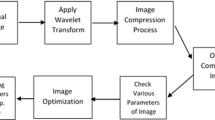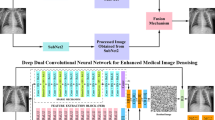Abstract
As a speciality, radiology produces the highest volume of medical images in clinical establishments compared to other commonly employed imaging modalities like digital pathology, ophthalmic imaging, etc. Archiving this massive quantity of images with large file sizes is a major problem since the costs associated with storing medical images continue to rise with an increase in cost of electronic storage devices. One of the possible solutions is to compress them for effective storage. The prime challenge is that each modality is distinctively characterized by dynamic range and resolution of the signal and its spatial and statistical distribution. Such variations in medical images are different from camera-acquired natural scene images. Thus, conventional natural image compression algorithms such as J2K and JPEG often fail to preserve the clinically relevant details present in medical images. We address this challenge by developing a modality-specific compressor and a modality-agnostic generic decompressor implemented using a deep neural network (DNN) and capable of preserving clinically relevant image information. Architecture of the DNN is obtained through design space exploration (DSE) with the objective to feature the least computational complexity at the highest compression and a target high-quality factor, thereby leading to a low power requirement for computation. The neural compressed bitstream is further compressed using the lossless Huffman encoding to obtain a variable bit length and high-density compression (\(20\times -400\times \)). Experimental validation is performed on X-ray, CT and MRI. Through quantitative measurement and clinical validation with a radiologist in the loop, we experimentally demonstrate our approach’s performance superiority over traditional methods like JPEG and J2K operating at matching compression factors.





















Similar content being viewed by others
Data Availability Statement
We have used the following publicly available data sets in this work—CBIS-DDSM (https://wiki.cancerimagingarchive.net/display/Public/CBIS-DDSM), InBreast (https://www.kaggle.com/martholi/inbreast), CheXpert (https://stanfordmlgroup.github.io/competitions/chexpert/), MURA (https://stanfordmlgroup.github.io/competitions/mura/), CHAOS (https://chaos.grand-challenge.org/Data/), LUNA 16 (https://luna16.grand-challenge.org/Data/), MRNet (https://stanfordmlgroup.github.io/competitions/mrnet/) and ISLES 18 (http://www.isles-challenge.org/).
References
L.F.W. Anthony, B. Kanding, R. Selvan, Carbontracker: tracking and predicting the carbon footprint of training deep learning models, in ICML Workshop on Challenges in Deploying and monitoring Machine Learning Systems (2020). arXiv:2007.03051
N. Bien, P. Rajpurkar, R.L. Ball, J. Irvin, A. Park, E. Jones, M. Bereket, B.N. Patel, K.W. Yeom, K. Shpanskaya et al., Deep-learning-assisted diagnosis for knee magnetic resonance imaging: development and retrospective validation of mrnet. PLoS Med. 15(11), e1002699 (2018)
D. China, F. Tom, S. Nandamuri, A. Kar, M. Srinivasan, P. Mitra, D. Sheet, Ultracompression: framework for high density compression of ultrasound volumes using physics modeling deep neural networks, in Int. Symp. Biomed. Imaging (2019), pp. 798–801
L. Gasieniec, M. Karpinski, W. Plandowski, W. Rytter, Efficient algorithms for lempel-ziv encoding, in Scandinavian Workshop on Algorithm Theory (Springer, 1996), pp. 392–403
P. Guo, D. Li, X. Li, Deep oct image compression with convolutional neural networks. Biomed. Opt. Express 11(7), 3543–3554 (2020)
J. Irvin, P. Rajpurkar, M. Ko, Y. Yu, S. Ciurea-Ilcus, C. Chute, H. Marklund, B. Haghgoo, R. Ball, K. Shpanskaya et al., Chexpert: a large chest radiograph dataset with uncertainty labels and expert comparison. Conf. Artifi. Intell. 33, 590–597 (2019)
A. Kar, S. Phani Krishna Karri, N. Ghosh, R. Sethuraman, D. Sheet, Fully convolutional model for variable bit length and lossy high density compression of mammograms, in Int. Conf. Comput Vis. Patt. Recog. Workshops (2018), pp. 2591–2594
A.E. Kavur, M.A. Selver, O. Dicle, M. Barış, N.S. Gezer, CHAOS—combined (CT-MR) healthy abdominal organ segmentation challenge data (2019). https://doi.org/10.5281/zenodo.3362844
D. Koff, P. Bak, P. Brownrigg, D. Hosseinzadeh, A. Khademi, A. Kiss, L. Lepanto, T. Michalak, H. Shulman, A. Volkening, Pan-Canadian evaluation of irreversible compression ratios (“lossy” compression) for development of national guidelines. Digit. Imaging 22(6), 569–578 (2009)
R.S. Lee, F. Gimenez, A. Hoogi, K.K. Miyake, M. Gorovoy, D.L. Rubin, A curated mammography data set for use in computer-aided detection and diagnosis research. Sci. Data 4(1), 1–9 (2017)
F. Liu, M. Hernandez-Cabronero, V. Sanchez, M.W. Marcellin, A. Bilgin, The current role of image compression standards in medical imaging. Information 8(4), 131 (2017)
A. Moffat, Linear time adaptive arithmetic coding. IEEE Trans. Inf. Theory 36(2), 401–406 (1990)
A. Moffat, Huffman coding. ACM Comput. Surv. (CSUR) 52(4), 1–35 (2019)
I.C. Moreira, I. Amaral, I. Domingues, A. Cardoso, M.J. Cardoso, J.S. Cardoso, Inbreast: toward a full-field digital mammographic database. Acad. Radiol. 19(2), 236–248 (2012)
H. Noh, S. Hong, B. Han, Learning deconvolution network for semantic segmentation, in Proceedings of the IEEE International Conference on Computer Vision (2015), pp. 1520–1528
A. Norweck James amd Seibert, K. Andriole, D. Clunie, B. Curran, M. Flynn, E. Krupinski, R. Lieto, D. Peck, T. Mian, M. Wyatt, ACR–AAPM–SIIM technical standard for electronic practice of medical imaging. J. Digit. Imaging 26(1), 38–52 (2013)
The Royal College of Radiologists, The adoption of lossy image data compression for the purpose of clinical interpretation (2008). https://www.rcr.ac.uk/sites/default/files/publication/IT_guidance_LossyApr08_0.pdf
E. Quinnell, E.E. Swartzlander, C. Lemonds, Floating-point fused multiply-add architectures, in 2007 Conference Record of the 41st Asilomar Conference on Signals, Systems and Computers (IEEE, 2007), pp. 331–337
P. Rajpurkar, J. Irvin, A. Bagul, D. Ding, T. Duan, H. Mehta, B. Yang, K. Zhu, D. Laird, R.L. Ball et al., Mura: large dataset for abnormality detection in musculoskeletal radiographs. in 1st Conference on Medical Imaging with Deep Learning (2018)
S.R. Sabbavarapu, S.R. Gottapu, P.R., Bhima, A discrete wavelet transform and recurrent neural network based medical image compression for MRI and CT images. J. Ambient Intell. Hum. Comput. 12(6), 6333–6345 (2021)
S. Siegel, Nonparametric statistics for the behavioral sciences. J. Nerv. Ment. Dis. 125(3), 497 (1957)
A.S. Sushmit, S.U. Zaman, A.I. Humayun, T. Hasan, M.I.H. Bhuiyan, X-ray image compression using convolutional recurrent neural networks, in Int. Conf. Biomed. Health Informatics (2019), pp. 1–4
M. Tan, Q. Le, Efficientnet: rethinking model scaling for convolutional neural networks, in Int. Conf. Machine Learning (2019), pp. 6105–6114
P. Wang, V.M. Patel, I. Hacihaliloglu, Simultaneous segmentation and classification of bone surfaces from ultrasound using a multi-feature guided CNN, in Int. Conf. Med. Image Comp. Comput.-Assist. Interv. (2018), pp. 134–142
J. Yan, S. Chen, Y. Zhang, X. Li, Neural architecture search for compressed sensing magnetic resonance image reconstruction. Comput. Med. Imaging Graph. 85, 101784 (2020)
Acknowledgements
This work is supported through a research grant from Intel India Grand Challenge 2016 for project MIRIAD.
Author information
Authors and Affiliations
Corresponding author
Additional information
Publisher's Note
Springer Nature remains neutral with regard to jurisdictional claims in published maps and institutional affiliations.
Appendices
Appendix A Cost of compute for \({{\texttt{net}_\texttt{C}}}^{\mathrm {(Stage I)}}_{(d)}(\cdot )\)
See Appendix Table 11.
Appendix B Cost of compute for \({{\texttt{net}_\texttt{D}}}^{\mathrm {(Stage I)}}_{(d)}(\cdot )\)
See Appendix Fig. 22 and Table 12.
Output of generic decompressor (\({\texttt{net}_\texttt{D}}_{(d)}^{\mathrm {(Stage III)}}\)) for different depths(d) of network. Each row of the figure corresponds to a data set with depth along the columns. The resolution of the images is mentioned within parentheses along each row. The compression factor (CF) of each image is mentioned across the row
Rights and permissions
Springer Nature or its licensor (e.g. a society or other partner) holds exclusive rights to this article under a publishing agreement with the author(s) or other rightsholder(s); author self-archiving of the accepted manuscript version of this article is solely governed by the terms of such publishing agreement and applicable law.
About this article
Cite this article
Raj, A., Sathish, R., Sarkar, T. et al. Designing Deep Neural High-Density Compression Engines for Radiology Images. Circuits Syst Signal Process 42, 643–682 (2023). https://doi.org/10.1007/s00034-022-02222-0
Received:
Revised:
Accepted:
Published:
Issue Date:
DOI: https://doi.org/10.1007/s00034-022-02222-0





